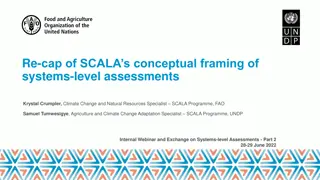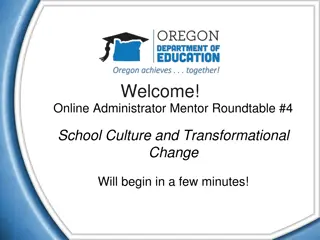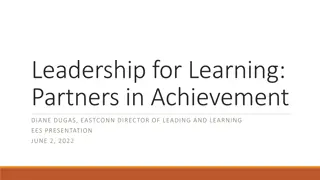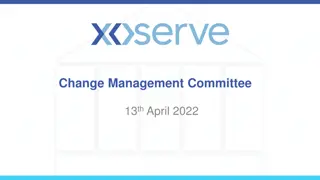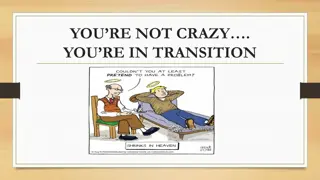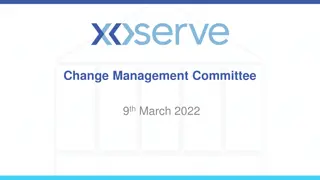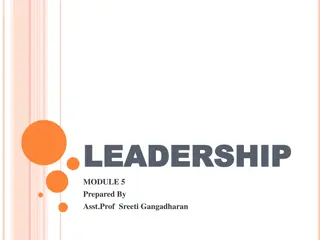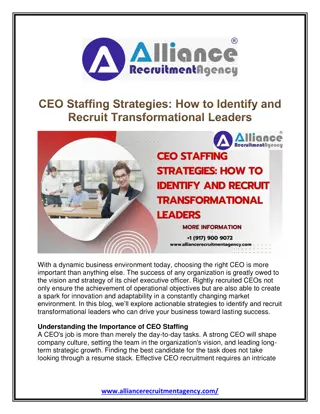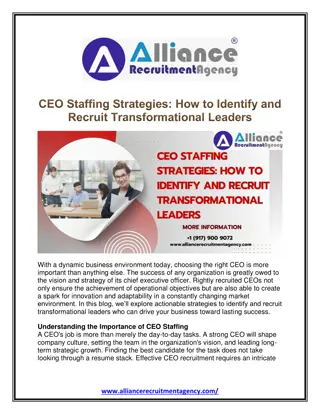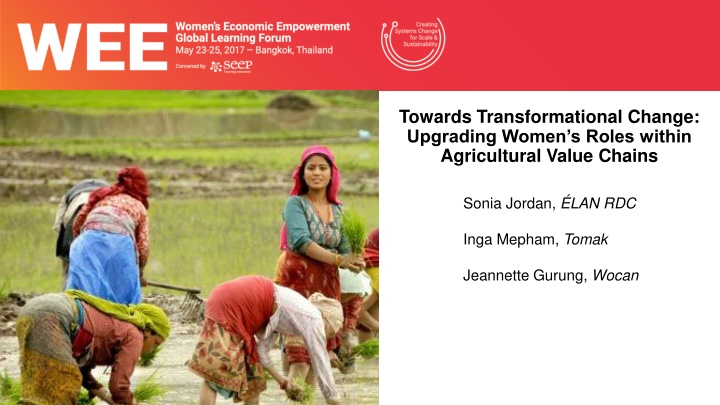
Upgrading Women's Roles in Agricultural Value Chains for Gender Equality
Explore how to define and support upgraded roles for women in agricultural settings to achieve gender equality. Learn about interventions, partnership models, and key factors for role enhancement.
Download Presentation

Please find below an Image/Link to download the presentation.
The content on the website is provided AS IS for your information and personal use only. It may not be sold, licensed, or shared on other websites without obtaining consent from the author. If you encounter any issues during the download, it is possible that the publisher has removed the file from their server.
You are allowed to download the files provided on this website for personal or commercial use, subject to the condition that they are used lawfully. All files are the property of their respective owners.
The content on the website is provided AS IS for your information and personal use only. It may not be sold, licensed, or shared on other websites without obtaining consent from the author.
E N D
Presentation Transcript
Towards Transformational Change: Upgrading Women s Roles within Agricultural Value Chains Sonia Jordan, LAN RDC Inga Mepham, Tomak Jeannette Gurung, Wocan
Introduction Increased access + enhanced agency upgraded role Gendered power dynamics persist with women still concentrated in lowest rungs Particularly difficult to upgrade women s roles within agricultural settings Upward progression of women s roles is fundamental to achieving gender equality 1. How can we define an upgraded role? 2. How can we better understand women s existing roles and use this to deliver interventions supporting women to adopt new and/or better roles? 3. How can businesses be incentivised to promote such upgrading? 4. What measurement approaches can be used to understand changes to roles?
Quiz what counts as an upgraded role? The intervention Partnership with a commercial farm to pilot a maize out-grower scheme. Farms vegetables on plot borrowed from husband. Aim is to increase farmers productivity and volume of maize produced for farm. Outdated agricultural practices, limited access to market information; low quality inputs. Intervention may enable women to upgrade their roles by: entering new roles in new sectors (cash crops) increasing job securitythrough contracted work improving working conditions increasing value capture increasing sustained access to capacity development and training Sells vegetables informally. No involvement in cash crops. TL wants to test your assumptions to arrive at a clear definition as to what counts as an upgraded role.
Quiz what counts as an upgraded role? Yes, her role has been upgraded Time to vote! Would we consider Rosette to have upgraded her role if No, her role has not been upgraded She participates in the out-grower scheme but does so unofficially because the contract is registered in her husband s name Entered a new sector and is benefiting by proxy from increased access. But, role hasn t fundamentally changed: still engaged informally; no real increase in job security, no change in value capture, no increase in sustained access to capacity development. Entered a new role in a new sector, and is benefiting directly from increased access. She participates in the out-grower scheme and the contract is in her name, but the arrangement is not renewed after one agricultural season Increased job security, improved working conditions, increased value capture, and access to capacity development and training. But, this is not sustained upgraded role. She participates in the out-grower scheme, the contract is in her name, and guarantees her continued participation across agricultural seasons Entered a new role in a new sector, and is benefiting directly from increased access. Increased job security, improved working conditions, increased value capture, and access to capacity development and training over a sustained period.
So, how can we define an upgraded role? 1. Entering new roles 2. Entering new sectors Sustained over a period of time 3. Increasing job security 4. Improving working conditions 5. Increasing value capture 6. Increasing sustained access to capacity development 7. Increasingflexibility Access + agency necessarily result in upgraded roles
How can we better understand womens existing roles? Need to undertake stand alone Gender equality and Social Inclusion Analysis (GESIA) as well as gendered markets system/ value chain analysis. Triangulate the findings 1. The GESIA allows an understanding of the socio-cultural norms and context in which women and men live and make decisions 2. GESIA- has 8 core areas of enquiry. Involved a desk study, field work (PRA tools and interviews), national validation workshop 3. Highlights why different gender roles have emerged in general and within the market system.
How the results of the GESIA have been used Changed the original Theory of Change Value chain identification and design Highlighted social-cultural norms & the interplay with social inclusion factors Enabled uptake of high level gender approaches within a market system/Nutrition program-Ambition to be gender transformative Brought Agriculture practitioner & service providers closer to women s organisations GESIA was shared widely with broad audience. People reacted positively to this analysis and this has reinforced the importance Influenced program management & program workplace culture Built in women s voice component into policy and regulatory reform
How can we use information on womens existing roles to facilitate the adoption of new and/or better roles? 1. Entering new roles leadership within market place committees, livestock health roles, aggregator's & price fixers. New roles for women s organisations to be involved in value chains/MSD. 2. Entering new sectors moving from white rice to red /black rice (women led commodity), piglet rearing 3. Increasing job security- Women negotiating land usage 4. Improving working conditions- labour saving technologies, low pay for effort, time saving 5. Increasing value capture niche products dried meats, snack food 6. Increasing sustained access to capacity development- gaps analysis leading to focus on catching up women farmers to men , Need to bring women on to the economic decision making table 7. Increasingflexibility on terms that are convenient for women Overall recognition - Advocacy campaign on the increasing the visibility of the current contribution of women farmers and traders in the market system and in household food security.
How can businesses be incentivised to promote such upgrading? Obstacles: 1. Absence of mandate in technical sector of agriculture (and bias that views farmers as male) : leads to integrationist rather than transformative approach 2. Gender equality is low-threat/low opportunity issue: level of threat depends on whether it affects profits or public image; opportunities measured by level of resources that need to be expended vs. gains to be made by addressing issue 3. Lack of expertise and networks and linkages to appropriate partners: many agribusinesses not aware of sources of expertise or partners for women s empowerment
What will compel agribusinesses to change practices, to contribute to upgrading roles for women in supply chains? - W+ Standard created to incentivize companies and organizations, using market based approach - Unique certification label that endorses projects that create increased social and economic benefits for women, for consumer facing products - Measures and quantifies change in 6 areas: Time saving, health, income/assets, knowledge, food security and leadership - Certifies changes from baseline situation, using independent verifiers
How can the W+ contribute to upgrading roles for women in supply chains? - W+ units embody women s empowerment results in transparent, accountable way, preventing pink washing - Can be purchased by companies, governments, individuals without need for their investments in human and physical resources - Lead to new funding and partnering opportunities for women entrepreneurs and organizations, to generate W+ units for this market - Critically, provide new financial resources to women engaged in projects, from premiums or sale of W+ units
What measurement approaches can be used to understand changes to roles? Learning lessons Introduce household-level role change into definition Develop AS IS > TO BE sheets for each sector Poor women must experience at least one of the following: o Greater job security o Formalisation of role o Improved position in value chain o Greater sustained opportunity for training o Improved working conditions Mixed methods SMART indicators. Role change within the household? Interventions insufficiently targeted around role change Defintion too broad for clear change trajectory at sector level Initial approach Adapted approach
Questions for the audience 1. Does the upgrading of women s roles necessitate the downgrading of men s? Is it a zero-sum game? 2. What are the best strategies to facilitate role change? 3. Can the economic upgrading of women s productive roles support the social upgrading of their roles in the household? And questions for us




